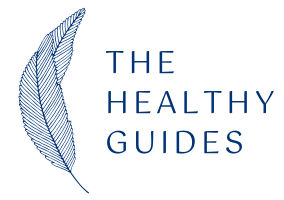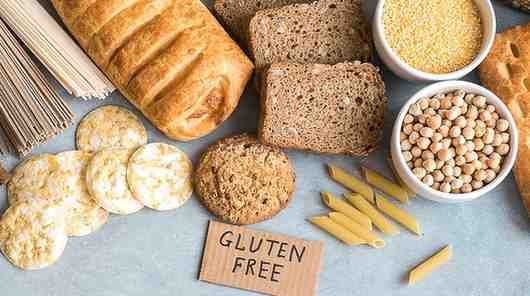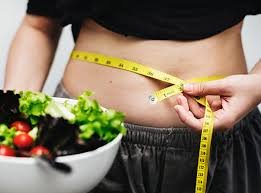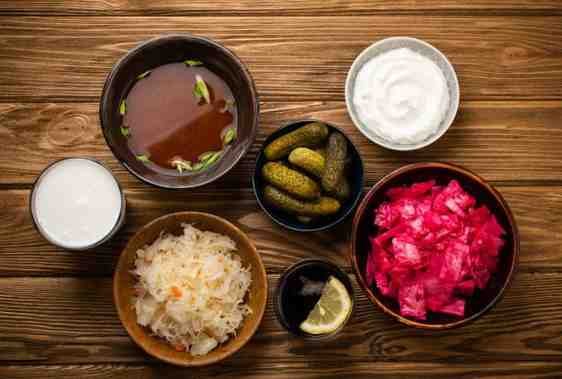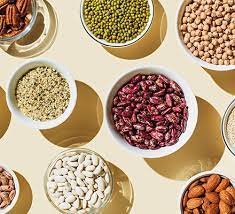Introduction: The Beginning of Your Gluten-Free Adventure
If your stomach could talk after a plate of pasta or a warm slice of bread, what would it say? For some, it might whisper, “Help…” — and for others, it might shout it. That’s where a gluten-free diet meal plan comes to the rescue. Whether you’re dealing with celiac disease, gluten sensitivity, or you simply want to feel lighter and more energized, removing gluten can make a world of difference. In this guide, we’ll explore why going gluten-free isn’t just a trend, but for many people, the best choice for their health.
That’s where a gluten-free diet meal plan comes in. Think of it as giving your body high-quality fuel that won’t clog the engine. Whether you have celiac disease, gluten sensitivity, or you’re just looking for a cleaner way of eating, going gluten-free can make a world of difference in how you feel, look, and live.
In this guide, I’m going to walk you through:
- What a gluten-free diet really is
- Why it can improve your health and energy
- A full 7-day gluten-free meal plan you can start tomorrow
- Tips for grocery shopping, eating out, and avoiding hidden gluten
- How to do it right so you feel better, not worse
By the end, you’ll know exactly why so many people swear by this way of eating—and how you can make it work for your lifestyle without feeling deprived.
1. What Is a Gluten-Free Diet, Anyway?
Gluten is a type of protein found in wheat, barley, rye, and any food made with them. That means bread, pasta, cereals, cookies, beer… and sometimes even things you wouldn’t expect, like soy sauce or certain soups.
For many people, gluten is harmless. But for others—especially those with celiac disease or gluten sensitivity it can spark a whole range of unpleasant symptoms: bloating, tiredness, stomach troubles, achy joints, brain fog… and the list goes
A gluten-free diet meal plan simply means you avoid gluten-containing foods and replace them with naturally gluten-free options like:
- Fresh fruits and vegetables
- Meat, fish, and poultry (unprocessed)
- Eggs
- Gluten-free grains like rice, quinoa, millet, buckwheat
- Nuts, seeds, legumes
The trick is not just removing gluten but replacing it with nutrient-dense foods so your body thrives.
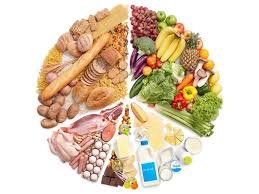
2. Why a Gluten-Free Diet Can Be a Game-Changer
So, what are the benefits of a gluten-free diet? Well, here’s the good stuff:
1. Digestive Relief
If you’ve been dealing with bloating, gas, or stomach cramps, gluten might be the culprit. Removing it can calm your digestive system and help your gut heal.
2. Reduced Inflammation
For people with celiac disease, gluten triggers inflammation in the intestines. Going gluten-free reduces this inflammation, which can also have a positive ripple effect on your overall health.
3. More Energy
When your gut is happy, it can absorb nutrients better leading to more steady energy throughout the day. Many people say they feel less sluggish after cutting gluten.
4. Clearer Mind
Brain fog is a common (and annoying) symptom of gluten sensitivity. Ditching gluten can lead to sharper focus and improved mental clarity.
5. Weight Management
A gluten-free meal plan often means fewer processed carbs and more whole foods, which can naturally support healthy weight loss.
3. The Pitfalls You Need to Watch Out For
Let’s be real: going gluten-free isn’t a magic health switch if you just swap wheat bread for gluten-free cookies. Here are a few traps to avoid:
- Nutrient Gaps
Some gluten-free products lack fiber and B vitamins, so make sure to get those from other sources like leafy greens, beans, nuts, and fortified gluten-free grains. - Hidden Gluten
It sneaks into sauces, soups, candies, and even French fries (if they’re coated before frying). Always check labels. - High Cost
Specialty gluten-free snacks can be 2–4× more expensive than regular ones. Your wallet will thank you if you focus on naturally gluten-free whole foods. - Too Many Processed GF Foods
Some gluten-free breads and pastries are just as high in sugar and additives as their gluten-filled cousins.
4. How to Build a Gluten-Free Diet Meal Plan That Works
A great gluten-free meal plan isn’t just “no gluten” — it’s about balance, variety, and enjoyment.
Here’s how to get started:
- Base Your Diet on Whole Foods
Think fruits, veggies, proteins, and gluten-free grains like quinoa, brown rice, and buckwheat. - Plan Your Meals Ahead
Spend an hour on Sunday planning breakfasts, lunches, dinners, and snacks for the week. - Read Every Label
Gluten hides under names like “malt,” “hydrolyzed vegetable protein,” and “modified food starch.” - Balance Nutrients
Make sure you’re getting enough fiber, iron, calcium, and vitamin B12. - Keep Emergency Snacks
Gluten-free protein bars, nuts, or fruit can save you when you’re out and hungry.
5. A Simple 7-Day Gluten-Free Meal Plan
Here’s a beginner-friendly gluten-free meal plan that’s tasty and doable.
Day 1
- Breakfast: Chia seed pudding with almond milk, strawberries, and gluten-free granola
- Lunch: Quinoa salad with chickpeas, cucumbers, and lemon vinaigrette
- Dinner: Grilled salmon with roasted sweet potatoes and green beans
Day 2
- Breakfast: Buckwheat pancakes with blueberries and a drizzle of honey
- Lunch: Brown rice veggie bowl with tamari sauce
- Dinner: Lentil soup with gluten-free garlic bread
Day 3
- Breakfast: Spinach-banana smoothie with gluten-free oats and almond butter
- Lunch: Grilled chicken wrap in a gluten-free tortilla with avocado
- Dinner: Baked cod with quinoa pilaf and steamed broccoli
Day 4
- Breakfast: Greek yogurt with gluten-free muesli and fresh mango
- Lunch: Chickpea curry with basmati rice
- Dinner: Zucchini noodles with tomato-basil sauce and parmesan
Day 5
- Breakfast: Omelet with mushrooms, spinach, and feta
- Lunch: Gluten-free pasta salad with olives, cherry tomatoes, and pesto
- Dinner: Roast chicken with mashed sweet potatoes and sautéed greens
Day 6
- Breakfast: Avocado toast on gluten-free bread with a poached egg
- Lunch: Tuna salad with mixed greens and lemon dressing
- Dinner: Beef stir-fry with rice noodles and vegetables
Day 7
- Breakfast: Smoothie bowl with berries, coconut flakes, and chia seeds
- Lunch: Veggie and quinoa stuffed bell peppers
- Dinner: Baked salmon with roasted root vegetables
6. Smart Pantry Swaps
- Flour → Almond flour, coconut flour, chickpea flour
- Pasta → Rice noodles, zucchini noodles, or lentil pasta
- Bread → Gluten-free whole grain bread or cloud bread
- Soy Sauce → Tamari or coconut aminos
7. Eating Out Without Stress
Eating out on a gluten-free diet is possible with a little planning:
- Look for restaurants with gluten-free menus or symbols.
- Don’t be afraid to ask about ingredients and cross-contamination.
- Mexican, Thai, and Mediterranean spots often have many naturally gluten-free dishes.
8. When to See a Professional
If you think you might have celiac disease or a gluten intolerance, see a doctor before starting a gluten-free diet so they can run the right tests. A dietitian can also help you make sure your meal plan is balanced.
Conclusion – Why Gluten-Free Might Be the Best Thing You Try This Year
Going gluten-free isn’t about jumping on a trend — it’s about listening to your body.
When done right, a gluten-free diet meal plan can help you feel lighter, more energetic, and more in control of your health.
Start small, experiment with new recipes, and focus on whole foods. Before you know it, you’ll be enjoying delicious gluten-free recipes that don’t make you feel like you’re missing out on anything — except the bloating, brain fog, and fatigue.
Got it — FAQs are gold for SEO because they capture common search queries and can land you rich snippets in Google.
Here’s an SEO-friendly FAQ section for your “Why a Gluten-Free Diet Meal Plan Is the Best” article, complete with primary key phrase integration and human-friendly answers.
❓Frequently Asked Questions About a Gluten-Free Diet Meal Plan
1. What is a gluten-free diet meal plan?
A gluten-free diet meal plan is a structured eating guide that removes all sources of gluten—a protein found in wheat, barley, rye, and their derivatives. Instead, it focuses on naturally gluten-free foods like fruits, vegetables, meats, fish, dairy, legumes, nuts, and gluten-free grains such as rice, quinoa, and buckwheat.
2. Who should follow a gluten-free diet meal plan?
It’s essential for people with celiac disease or non-celiac gluten sensitivity, as gluten can trigger digestive issues and inflammation. Some also choose it to improve digestion, reduce bloating, and support cleaner eating habits.
3. Can a gluten-free diet meal plan help with weight loss?
While it’s not a guaranteed weight-loss plan, many people find that eliminating gluten reduces processed food intake, which may lead to healthier weight management. However, success depends on balanced nutrition and portion control.
4. What foods should I avoid on a gluten-free diet meal plan?
You’ll need to avoid wheat, barley, rye, triticale, and foods containing these grains—like regular bread, pasta, cereals, baked goods, soy sauce, and some sauces or soups that use gluten as a thickener.
5. What are the health benefits of going gluten-free?
For those with gluten intolerance, benefits include improved digestion, reduced bloating, better nutrient absorption, and higher energy levels. Even without diagnosed gluten issues, many experience cleaner eating habits and fewer processed foods in their diet.
6. Can I eat out while following a gluten-free diet meal plan?
Yes! Many restaurants now offer gluten-free options. Look for menus with gluten-free labels, ask about cross-contamination, and choose naturally gluten-free dishes like grilled meats, salads, and rice-based meals.
7. What are good gluten-free substitutes for bread and pasta?
Popular gluten-free bread options include those made from almond flour, coconut flour, or rice flour. For pasta, try rice noodles, chickpea pasta, or zucchini noodles (zoodles) as healthy and tasty alternatives.
8. Is a gluten-free diet meal plan more expensive?
Specialty gluten-free packaged foods can be pricier, but focusing on naturally gluten-free whole foods like vegetables, fruits, meats, and rice can keep your budget in check.
9. Do I need supplements on a gluten-free diet meal plan?
Some gluten-free diets may lack certain nutrients like B vitamins, iron, and fiber. You can get these from fortified gluten-free products or consult a dietitian about supplementation.
10. How do I start a gluten-free diet meal plan as a beginner?
Begin with naturally gluten-free whole foods, learn to read labels carefully, stock your pantry with gluten-free staples, and try simple recipes to build confidence. Planning a week of meals in advance makes the transition much smoother.
Want more ideas on structuring meals for health? Our diet blog post walks you through food choices, portion control, and smart swaps that complement this nutrition guide for optimal health perfectly.
Looking for more ways to stay energised and motivated? Head over to our sports blog for inspiration and active lifestyle tips.”
